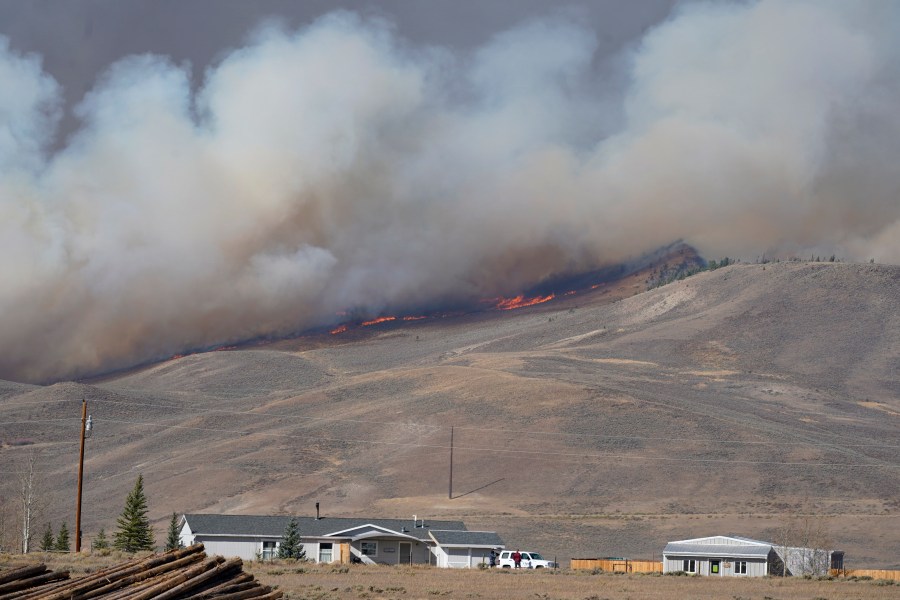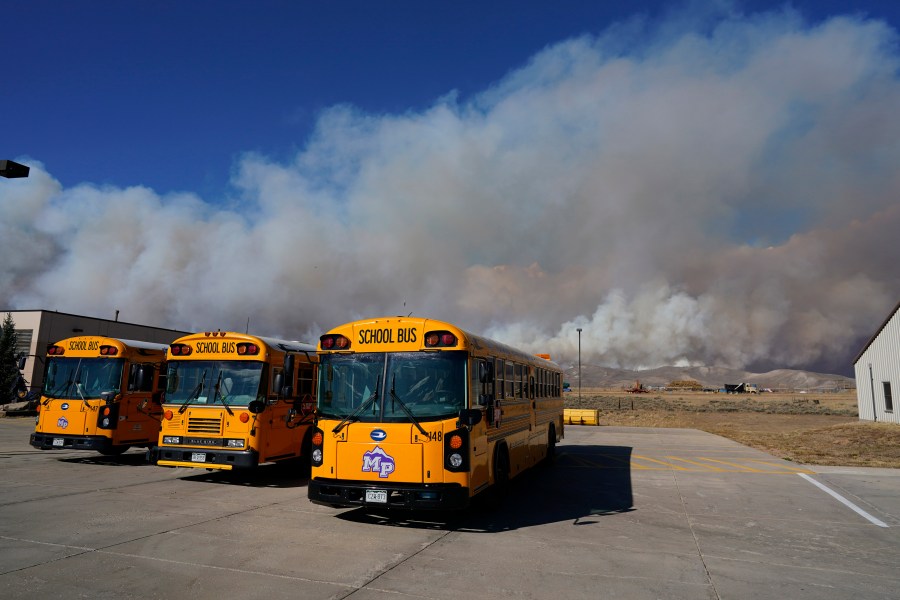DENVER (NewsNation Now) — An explosive Colorado wildfire that has already forced the evacuation of several mountain communities and the closure of Rocky Mountain National Park blackened another 45,000 acres on Thursday as it jumped the U.S. Continental Divide.
The East Troublesome Fire, which broke out on Oct. 14, exploded late Wednesday from around 19,000 to 125,000 acres. It has now burned 170,000 acres and was only about 5% contained as of Thursday afternoon, fire officials said.
The flames have spread into Rocky Mountain National Park, prompted the National Park Service to close the entire 415 square-mile expanse, and the blaze has become the second-largest on record in Colorado.
The closure of the national park is in addition to more than 1 million acres of wilderness in Colorado that the U.S. Forest Service, the Bureau of Land Management and state authorities have deemed off limits to the public.
The blazes have burned the second-most acreage since 2000.
The fire is among the latest in a brutal fire season following a long period of drought across Colorado. The cause remains under investigation.
The orange skies, winds gusting up to 70 mph, smoke tornadoes and hazardous air could be an apocalyptic scene out of a movie, but it has become the reality of Colorado’s wildfire season.
Normally, snow helps tamp down the devastation by this time of year, but drought across Colorado and warming temperatures have dragged out the season, fire scientist Jennifer Balch said.
“We don’t see October fires that get this large,” she said.
Colorado’s fires haven’t destroyed as many homes as the headline-grabbing wildfires in California and the Pacific Northwest the past few months, but they have worn down residents already weary from the coronavirus pandemic.
Glen Akins said the smoke has gotten thick and dark enough that streetlights have turned on during the day where he lives in the northern Colorado city of Fort Collins, where the Cameron Peak Fire in the foothills has burned more than 200,000 to become the largest in state history.
The Cameron Peak Fire started Aug. 13 and is 57% contained as of Friday morning.
The two fires are just 11 miles apart, but incident commander Noel Livingston said it was unlikely they could merge into a massive conflagration.
As a cyclist, part of Akins’ daily routine now includes checking the weather and smoke forecast before going outside. He’s also packed a bag in case of an evacuation order.
Akins said that “with a little bit of work,” he’s planned rides between the smoke of two fires in Wyoming and Colorado.
“I was in a pocket of clean air perfectly trapped between the Cameron Peak Fire smoke to the south and the Mullen Fire smoke to the north,” Akins said.
People throughout the state have been forced to evacuate because of the flames.
In parts of Colorado, the sky has been gray, the sun hazy and the odor of a burning campfire persistent for much of September and October. The Denver metro area and eastern Plains have been blanketed with smoke from fires not only in Colorado but blown in from Utah, California and Wyoming.
More than 448,000 acres of land has burned in Colorado at a cost of more than $215 million — with the numbers still rising, according to Larry Helmerick, fire information coordinator for the Rocky Mountain Area Coordination Center.
Scientists say climate change is responsible for more intense and frequent extreme events such as storms, droughts, flooding and wildfires.
The drought this year has intensified the wildfires, said Balch. The U.S. Drought Monitor designated all of Colorado as abnormally dry or in drought for the first time in eight years, with many areas labeled “extreme” or “severe.”
It is “just a matter of time” until the threat affects more people, who are moving closer to forests, Balch says.
“If I had a panic button, I would push it — because we have put millions of homes in harm’s way across the Western U.S.,” Balch said.
Plus, the air quality has gotten bad enough in some areas that Gov. Jared Polis has encouraged people to stay indoors to avoid the health effects of smoke that are compounded by the coronavirus.
Poor air quality contributes to breathing issues that people may face from the virus or if they have asthma, emphysema or acute bronchitis, which can lead to more emergency room visits, said Colleen Reid, assistant professor of geography at the University of Boulder who studies the effects of climate change on public health.
The extended wildfire season has taken a toll amid another crisis.
“During the pandemic, we’ve been told that if you want to gather with friends or something, it’s better to be outside, but now we’re having all of our outside spaces shut down because of the fire,” Akin said. “So it’s kind of a double whammy. It’s really impacting kind of how we were coping with the pandemic.”
The Associated Press, Reuters and NewsNation affiliate KDVR contributed to this report.



















